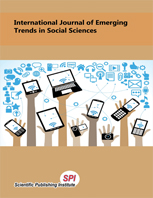Effects of cyberbullying on college-going girls in Tangail Sadar: Nature, causes, and consequences
DOI:
https://doi.org/10.55217/103.v15i2.698Keywords:
Adolescent, Colleges, Cyberbullying, Internet, Social-media.Abstract
Cyberbullying has turned into a vital issue in the recent world. Especially, girls are the main victim of cyberbullying. This study has focused on the nature, causes, and effects as well as identifying the relationship between spent time on social media and the effects of cyberbullying on college girl students in Tangail Sadar. 153 students between the ages of 16 and 19 served as the study's respondents and a mixed approach was employed. Multistage sampling and purposive sampling methods are used, Survey and interview techniques are used to gather data from the respondents. The study reveals that cyberbullying emerges most commonly from a low mentality towards girls, revenge, for having fun or entertainment, social media activities, clothing of girls, lack of morality, etc. and most of the bullying is related to messaging, sexual harassment, spreading rumors, comments, disclosing private info, sending unwanted images or videos type of cyberbullying; Victims experience bad effects as consequences, especially on their psychology (stress, depression and impact on their academic life). Cyberbullying is a type of bullying that does not need any strong reason to have occurred because the offender stays confidential in the cyber world. Therefore, our government must be conscious of solving this issue.


